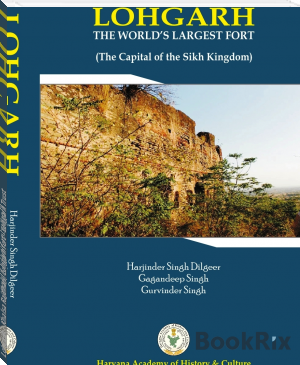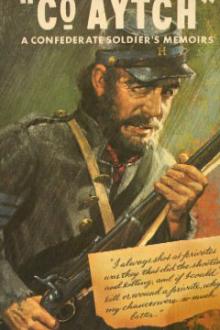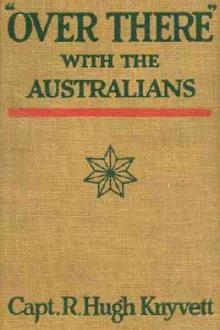Lohgarh - Khalsa Rajdhani, Lohgarh fort - Lohgarh Trust by S. Daljeet Singh Bajwa (books that read to you .TXT) 📕

- Author: S. Daljeet Singh Bajwa
Book online «Lohgarh - Khalsa Rajdhani, Lohgarh fort - Lohgarh Trust by S. Daljeet Singh Bajwa (books that read to you .TXT) 📕». Author S. Daljeet Singh Bajwa
By the evening, the Sikhs were in possession of the town and the main Fort. Now, no young member of the Mughal or Sayyad families was found in the town; there were only old men, women and children or some of the families of the workers whom the Sikhs did not disturb because the Sikhs did not touch any female, child, old man and those who surrendered. Besides, the Sikhs did not touch even a single Muslim grave or mosque (a dozen of these are still in existence even after 300 years).9
In Samana, the common people, in fact, had been angry with the umraa of the town, because they had been treating them as their bonded labour. So, the workers too, took their wrath upon the umraa by killing some of those who had perpetrated atrocities on them. Besides these Muslim common folk, the Hindus too took part in attacks on the umraa. The acts of burning mansions and looting, etc. were carried mostly by the aggrieved residents as a consolation; they were intent on taking revenge from the umraa.
At Samana, the Sikhs had captured a very large number of weapons, horses, gold, diamonds, silver and other valuables. Now, they were well equipped with arms and were capable of attacking any stronghold. In the battle of Samana, major role had been played by (Bhai) Fateh Singh, so, Banda Singh appointed him as the Governor of Samana. After leaving a unit of the Sikh soldiers there, Banda Singh decided to capture other Forts around Sarhind.
By this time, the number of the Sikh soldiers had crossed ten thousand. According to Khaki Khan:
“In just two to three months, four to five thousand horsemen, and seven to eight thousand foot soldiers joined him. Day by day, their number went on increasing and they plundered a lot of valuables. Soon eighteen to nineteen thousand persons began a reign of plundering.”10
The Sikhs Capture Ghuram
After handing over Samana to Fateh Singh, Banda Singh turned his attention towards Ghuram.11 On his way to Ghuram, he captured Sanaur12 too. Here too, Banda Singh got some arms and horses.
Banda Singh wanted to capture all the Forts around Sarhind with a view to isolate and deprive it (Sarhind) from any possible help from outside. Though Ghuram Fort did not have a very big force, but its caretaker decided to put up a fight against the Sikh army. So, a fierce battle was fought here, but before evening the Sikhs were able to capture this Fort too. During this battle, hundreds of soldiers of the Mughal army were killed or wounded.
Attack on Thaska
After capturing Ghuram, Banda Singh moved to Thaska (about 20 km from Ghuram). This was also known as Thaska Miran Ji;13 and, was the abode of hundreds of Sayyads, Sheikhs and rich Mughals and other umraa. Some of these boasted themselves to be pirs (known among Muslims as holy men). They used to befool common folk by propagating that they had miraculous powers. It was like the false propaganda of the priests of the city of Parbhas Pattan (the city of Somnath temple). In 1027, when Mohammed Ghauri attacked, the Hindu priests had claimed (in fact boasted) that due to their mantras (incantation, magical verses) Ghauri would not be able to enter their city; and, the same had been boasted by the Pirs of Sayyadpur (Eimanabad) when Babar attacked the city in 1520.14 Neither at Somnath nor at Sayyadpur, had the drama of miracles worked as that was a mere fraud (and there is no such miraculous power on this earth). The attackers plundered and
perpetrated atrocities and the so-called miracles did not work. Here, at Thaska too, the pirs’ drama, their so-called miraculous power, black magic, occult power was exposed.
When Banda Singh captured the Fort and the town the elite of the town, headed by Pir Zafar Ali, came to him with leaves of grass in their mouths (symbolizing that ‘we are your cows’, please don’t kill us).15 Banda Singh told them, ‘cow may be a sacred animal for the Hindus; it has nothing to do with Sikhism; but, your apology and surrender is enough; we shall not harm any innocent person and would punish only those who have committed crimes against innocent folk’. After hearing this, the umraa of the town came to Banda Singh with precious gifts. Banda Singh held his court and tested the credentials of the influential persons of the city. He listened to the common folk and on the basis of these investigations; he punished the cruel and evil officials. Having observed this, the common folk praised the Sikhs for their justice.
Thanesar and Shahbad-Markanda Occupied
After capturing Thaska, Banda Singh marched towards Thanesar (now Kurukshetra) and occupied it without much effort. From here he proceeded towards Shahbad, a city on the banks of river Markanda. When the chief of Shahbad came to know that the Sikhs were coming, he fled from the city and went to Delhi for his safety. When the Sikh army reached there, the deputies of the town surrendered without resistance and handed over the Fort to the Sikhs.
Mustafabad Occupied
By now, most of the Forts in that area had been occupied by the Sikhs; but a big Fort at Mustafabad was still to be conquered. There were more than 2500 armed soldiers under the chief of this town. When he came to know about the march of the Sikh army towards Mustafabad, he sent two thousand soldiers and two cannons to stop their advance. When the Hindus, who were accompanying Banda Singh’s army (who had joined the Sikhs with an intention of plunder and booty only), learnt about the dispatch of the canons by the Chief of Mustafabad,
they fled away. Now only the Sikh soldiers remained behind in the rank and file of the Banda Singh’s army.
When both armies confronted each other, the Sikhs made a powerful attack on the Mughal army compelling them to withdraw. While fleeing the battle-filed, they left behind them even one cannon, which was captured by the Sikhs. Now, the Sikh army attacked and occupied Mustafabad city and compelled the rulers and the umraa to pay tribute to the Sikhs.
Attack on Kunjpura
After the victory of Mustafabad, the Sikh army was in possession of the most of the Forts around Sarhind; they had, now, seven Forts in their possession and had mustered a several thousand fully armed soldiers too. Now, they could think of an attack on Sarhind, for which they had been planning for more than six months. But, Banda Singh wanted to wait still more. He was of the opinion that an attack on Sarhind should be so perfect that there should not be left even the slightest possibility of losing it.
incidently around this time, the Sikhs captured a man whom Wazir Khan had sent for getting reports about the Sikh army. The Sikhs, instead of killing or torturing him, let him off and asked him to inform Wazir Khan that the Sikh army was coming very soon to attack Sarhind. Banda Singh also asked him to inform Wazir Khan that before attacking Sarhind the Sikhs would attack his native town of Kunjpura.
When Wazir Khan received this information, he got quite scared. By this time he had known that the Sikhs had occupied not only Samana but also Sanaur, Ghuram, Thanesar, Thaska, Shahbad and Mustafapur. Now, he was sure that the Sikhs would definitely attack Sarhind and Kunjpura, so he dispatched four thousand soldiers as well as two big cannons to Kunjpura, to crush the Sikh army.
But, before Wazir Khan’s soldiers could reach Kunjpura, the Sikhs had already occupied it; and, when Wazir Khan’s army reached there, the Sikh army made a fierce attack on them and killed hundreds of them in no time. After such a loss, the Sarhind army fled the field leaving
its dead and the cannons behind to be taken over by the Sikhs. Besides the cannons, the Sikhs captured a large number of other weapons and horses too. After this, the Sikh army also captured Dahmala, another rich town in that region.
Victory of Kapuri
During those days Kadam-ud-Din was the Chief of Kapuri. (He was the son of Amanullah, who had been the Governor of Gujrat during the reign of Aurangzeb). Kadam-ud-Din hated the non-Muslims and would never miss an opportunity to torture or harm them. He was so cruel that he had set up a gang of his soldiers whose sole purpose was to forcibly carry away pretty and young Hindu girls for his sexual pleasure. He had also appointed agents who would inform him about the whereabouts of pretty Hindu females, and, these agents were always busy in getting information about the marriages of the Hindu girls and on the wedding day or around it. He would send his soldiers to forcibly carry off the ‘would be brides’ or, the recently married Hindu girls, for his sexual gratification. He was so much obsessed with sex that he would send his agents to bring young Hindu girls from other parganas (blocks/districts) too. Kadam-ud-Din had inherited a lot of wealth from his father and he himself had collected a lot of wealth and he would lavish most of this for his sexual ventures.
One day, a group of Hindus from Kapuri presented themselves before Banda Singh and narrated their woes. Banda Singh asked the Sikh army to immediately march towards Kapuri. At first Kadam-ud- Din’s men fought against the Sikhs but his rascals, rogues and hooligan mercenaries were no match to the heroic and committed Sikhs and they fled leaving Kadam-ud-Din alone. Though he fought for some time but he too realized that he would’t be able to defeat the Sikhs, so he shut himself in his mansion. The Sikhs tried to break open the gates of the mansion, but could not succeed; hence, they set it on fire; Kadam- ud-Din burned in this fire.16
Sadhaura Falls to the Sikhs
Sadhaura, in the feet of Shivalik hills, is one of the ancient towns of the Punjab. In those days it had a big Fort, and Banda Singh decided to take control of this city too. This city was being ruled by Usman Khan. He was on the Sikhs’ hit list because he had tortured and killed Pir Budhu Shah due to latter’s cordial and friendly relations with Guru Gobind Singh.
Like Kadam-ud-Din, Usman Khan too was notorious for his sex crimes, and, he too had forcibly carried away and raped several Hindu girls. The local Hindus had been living like slaves and even less than third-rate citizens. So, after capturing Kapuri, Banda Singh marched towards Sadhaura. Then, Sadhaura was a powerful stronghold and its Fort had very tall walls and strong gates, and, it was almost impossible to break into this Fort except after very heavy gun-shelling.
By this time, 35 to 40 thousand Sikhs had joined Banda Singh and it had become a big force.17 On the other hand Usman Khan too had a powerful army and several cannons. It seemed that the Sikhs wouldn’t be able to capture this city easily.
When the Sikh army reached the outskirts of Sadhaura, Usman Khan’s cannons began showering shells on them, killing several Sikhs. But, in spite of this, the Sikh forces continued their march. Very soon they were able to break open one of the gates of the city. A fierce battle was fought in the streets of Sadhaura between the Sikhs and the Sadhaura army. During this expedition, the relatives of the martyr Pir Budhu Shah extended their full support to the Sikhs





Comments (0)